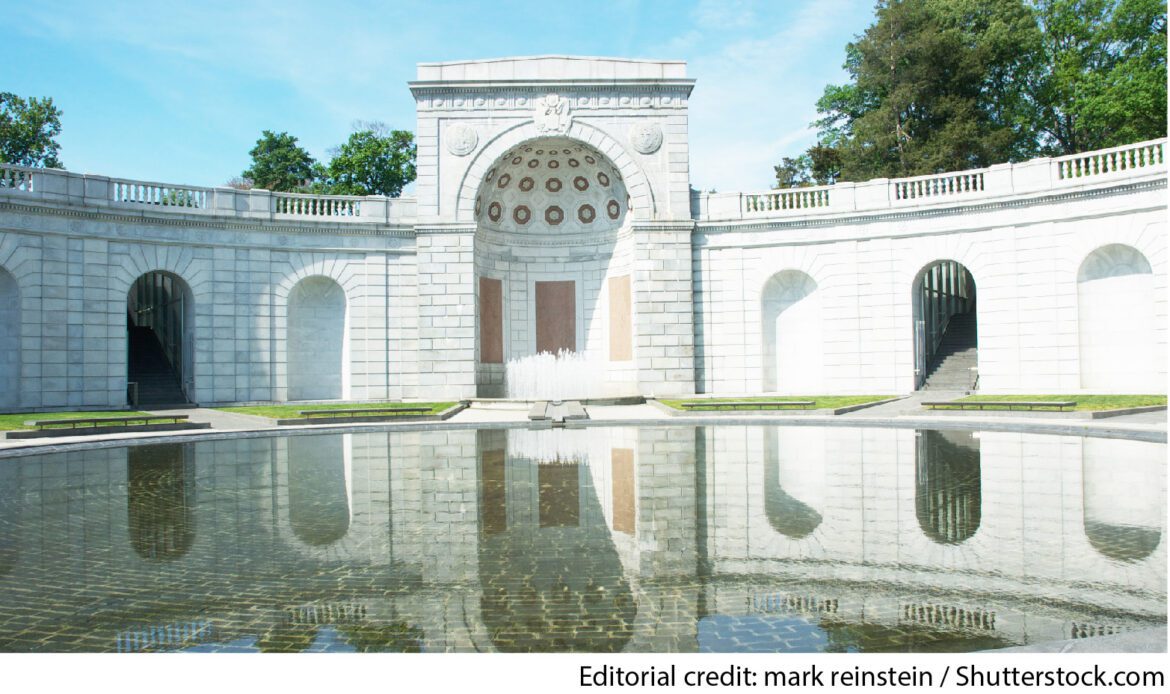Commemorating and honoring the service that more than 3 million women have dedicated to our country, the Women in Military Service for America Memorial stands proudly at the gateway to Arlington National Cemetery, patiently awaiting visitors and often being overlooked. The memorial is the only major national memorial to honor all women who defended the nation and boasts a 33,000-square-foot education center.
When the Vietnam Veterans Memorial opened in 1983, women who fought in World War II realized they wanted to be part of the conversation of honoring those who served as well. After speaking with former Ohio Rep. Mary Rose Oakar and the American Veterans Committee, many other women veterans began spreading awareness about their vision for a memorial. In an interview with Stay Arlington, the President of the Memorial, Phyliss Wilson, spoke about the journey to creating the memorial: “When women of WWII, Vietnam, and Korea heard that they were actually going to create a national military women’s memorial, they came out in force … to help raise the money that we needed in order to build this beautiful place.”
Once the dream to create a women veteran’s memorial gained followers and donors, President Ronald Reagan signed bill PL-610 into law granting “a memorial on Federal Lands in the district of Columbia and its environs to honor women who have served in the Armed Forces of the United States.”
The memorial was built by restoring Arlington National Cemetery’s original main gate structure, erected in the 1930s but never finished. In the ’90s, the land behind and below the wall was excavated to become the education center you can visit today. The facade of the memorial is a beautiful granite retaining wall housing the Court of Valor and a reflecting pond with a 200-jet fountain to represent the sound of women’s voices. Four stairwells breach the original granite walls to access the upper terrace, symbolizing women breaking through military barriers.
Inside you’ll find three gallery spaces chronicling the collective history of women veterans dating back to the Revolutionary War, then circling back to the present day. The narrative is broken down into several sections with personal testimonies, letters, belongings, and more to keep you engaged. The memorial also facilitates a traveling exhibit, which currently is named “Color of Freedom: Honoring the Diversity of America’s Servicewomen,” and an online exhibition, “Nurses in the Spanish-American War.”
Once you make it through the galleries, you’ll end up at the Vaught Center, where you can stop in the gift shop or rent out the event space. As you leave the education center, you will pass the Hall of Honor, dedicated to women who were killed in action, died in the line of duty, were taken as prisoners of war, or received the highest awards for service and bravery. The same area houses the Sister Stone, cut from the same marble as the Tomb of the Unknown Soldier.
The aspect of this memorial that Wilson is most proud of and excited about is the Register. The Register is an interactive computer database with the names and stories of 300,000 women who served. While that is a substantial number of women, Wilson and her colleagues estimate the women in the Register represent less than 10 percent of the women who served. She encourages anyone who knows a woman who served or is a woman who served herself to register so that your story can be heard. In her interview, she said, “The importance of highlighting women that have served in defense of this nation is that we served when it wasn’t legal to serve.”
In honor and celebration of any servicewomen in your life, don’t miss out on this beautiful memorial, whether in person or virtually.
June is an especially appropriate time to visit, as Women Veteran’s Day is observed annually on June 12, signifying the day President Harry S. Truman passed the Women’s Armed Services Integration Act in 1948. This law allowed women to serve as full members in all four branches of the military legally, even though women had been serving their country in the military since the Revolutionary War.

